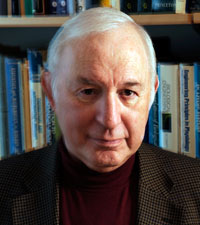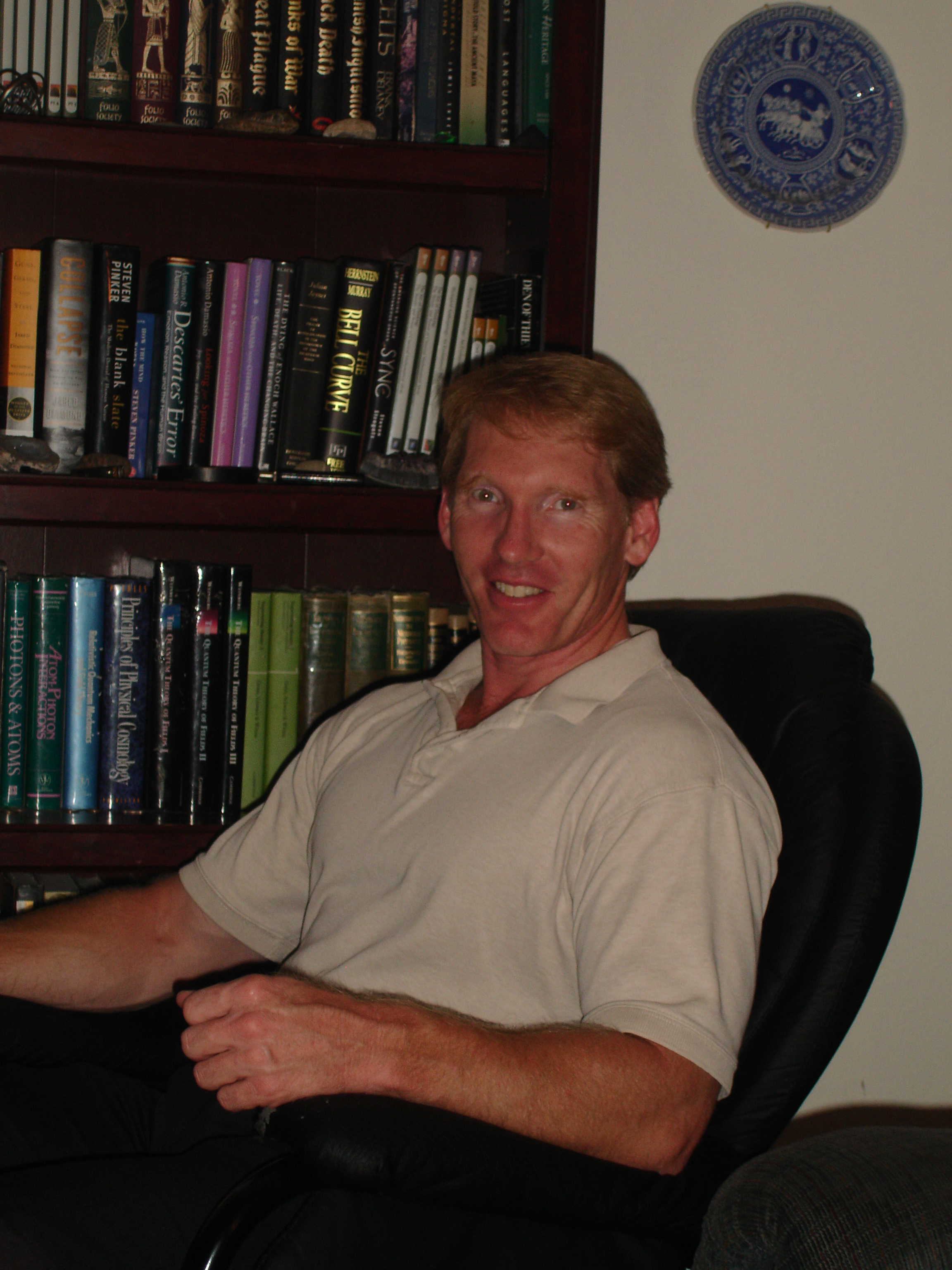Welcome to the STARKFX News Page on the physics of brain waves.
This is an article on research by Jack Cowan, a University of Chicago mathematician, into the physics of brain activity -a necessary step before we can begin to understand the subjective experiences we are so familiar with but know so little about.
Brain Physics
 Brain waves and brain activity in general have a lot in common with the physics of phase transitions.
Brain waves and brain activity in general have a lot in common with the physics of phase transitions.
“Structures built from a very large number of units can exhibit sharp transitions from one state to another state, which physicists call phase transitions,” said Cowan, a Professor in Mathematics and Neurology at Chicago. “Strange and interesting things happen in the neighborhood of a phase transition.”
When liquids undergo phase transitions, they evaporate into gas or freeze into ice. When the brain undergoes a phase transition, it moves from random to patterned activity. “The brain at rest produces random activity,” Cowan said, or what physicists call “Brownian motion.”
Although the bulk of his work involves deriving equations, Cowan’s findings mesh well with laboratory data generated on the cerebral cortex and electroencephalograms. His latest findings show that the same mathematical tools physicists use to describe the behavior of subatomic particles and the dynamics of liquids and solids can now be applied to understanding how the brain generates its various rhythms.
These include the delta waves generated during sleep, the alpha waves of the visual brain, and the gamma waves, discovered during the last decade, which seem related to information processing. “The resting state of brain activity seems to have a statistical structure that’s characteristic of a certain kind of phase transition,” Cowan said. “The brain likes to sit there because that’s the place where information processing is optimized.”
Cowan organized a session for AAAS on Mathematics and the Brain, which will take place from 8:30 to 10 a.m. EST Saturday, Feb. 16. He also will participate in a news briefing on the topic at 3 p.m. EST Friday, Feb. 15. Joining him at both events will be mathematician Nancy Kopell of Boston University and computational neuroscientist Tomaso Poggio of the Massachusetts Institute of Technology.
At this stage of his research, Cowan said it would be premature and speculative for him to try to relate how phase transitions in the brain might relate to neurological conditions or states of human consciousness. “That’s for the future,” he said.
Another component of his latest research is the close relationship between spontaneous pattern formation in brain circuits and in chemical reaction networks. In this research, he shows how mathematics can help explain visual hallucinations and how the visual cortex obtained its stripes, which are visible to the naked eye when removed from cadavers.
“This line of research on pattern formation can be traced back to Alan Turing, who also founded the modern science of computation,” said Terrence Sejnowski of the Salk Institute for Biological Studies in La Jolla, Calif., who is a leading specialist in computational neurobiology.
Cowan’s quest to understand the brain’s workings using numerical methods spans more than four decades. Along the way he has collaborated with a series of Ph.D. students and colleagues in physics, mathematics, biology and neuroscience.
In 1972, he and postdoctoral fellow Hugh Wilson, now of Canada’s York University, formulated a set of equations that could describe the dynamics of neural networks. Now called “Wilson-Cowan equations,” they became a mainstay of neural network research. “But I always knew that those equations were inadequate, so I kept thinking about them,” Cowan said.
Then in 1985, he ran across an article in a Japanese journal that described a statistical physics approach to chemical reaction networks. “It took me years to understand how to use these tools for biological networks,” he said. “It so happens that there is an analogy between the behavior of chemical reaction networks and neural networks.”
His research career began in 1962, when as a graduate student in electrical engineering, he worked with the founders of neural network theory. These included Norbert Wiener, who died in 1964, before they could work jointly on the problem that Cowan continues to address.
“I didn’t really understand what he was saying to me until I worked it out myself. He was one of the great mathematicians of the 20th century,” Cowan said.
Quick Science & Math References
- Our Solar System.
- Earth Facts.
- The Metric System.
- Trigonometric Identities.
- Vector & Tensor Identities.
- Explicit Forms of Vector Operators
- Light & Electromagnetic Spectrum.
- Common Laser Wavelengths.
- Human Physiology Facts.
- Human History Timeline
- Geologic Timeline
- Cambrian Explosion
- Life on Earth Timeline
- ASCII Codes and HTML Display Codes
- Thousands of HTML Symbol Codes
- HTML Symbol Codes for Greek Letters
- The Best Way to put Equations on your Web Page
Physics Basics Series
- Basics of Classical Mechanics.
- Basics of Quantum Mechanics.
- Basics of Electrodynamics.
- Basics of Optics.
- Basics of Mathematical Tools for Physics.
- Basics of Plasma Physics.
- Basics of Solid State Physics.
Math Basics Series
- Numbers
- Arithmetic
- Algebra
- Geometry
- Analysis
Technology Basics Series
- Basics of Remote Sensing.
- Basics of Digital Signal Processing.
- Critical Electronic Circuits
- Infrared Imaging Basics
Knowledge Branches
- Information Theory
- How Reading Works in the Brain
- Psychology of Learning
- Logic
WORK IN PROGRESS
- What is the Stark Effect?
- The Chemistry of Love &/or Addiction
- Critical Thinking: How to question what you see, read or hear.
- Aristotle's Prior Analytics - the birth of Logic.
- Optical Solutions, lenses that solve problems
- Fractals
- PTC - Photon Transfer Curve or Mean Variance Analysis
- 3-D Noise
- Laser Primer
- Rail Guns
- Special Relativity
- Radar Technology
- Acousto-optic Cells
- Harmonic Generation for Laser Frequency Doubling (SHG) and Tripling -using non-linear crystals.
- Measurement: Accuracy & Precision.
- Things you should know about computer modeling of physical phenomena!
- Giant Magneto-resistance
- Peltier Cooling
- Pyro-Electric Detectors
- Piezo-Electric Crystals
- Laser Speckle
- FFT and DFT the fast fourier transform and the discrete fourier transform
- Fabry Perot Etalon
- The Hydrogen Atom.
- PCA (Principal Component Analysis)
- Energy per mass in fuels such as Hydrogen, Gasoline, Kerosene, HMX etc...
- Nobel prize winning work on the CCD
- How does a CCD work and what are the normal characteristics of a CCD
- Nobel Prize Winning work on Giant Magneto-resistance
- FROG -frequency resolved optical gating
- Optical Wavefront Sensing
- THz imaging and time-domain spectroscopy
- Camera Calibration
- Laser Designators
- Resampling
